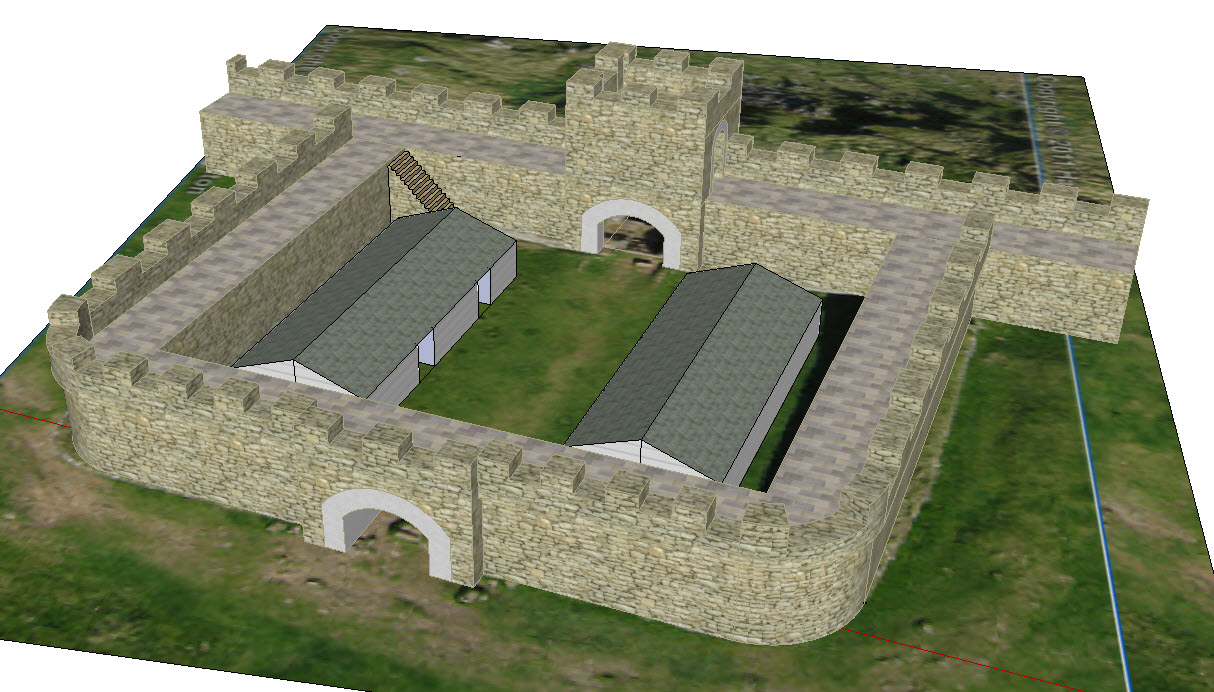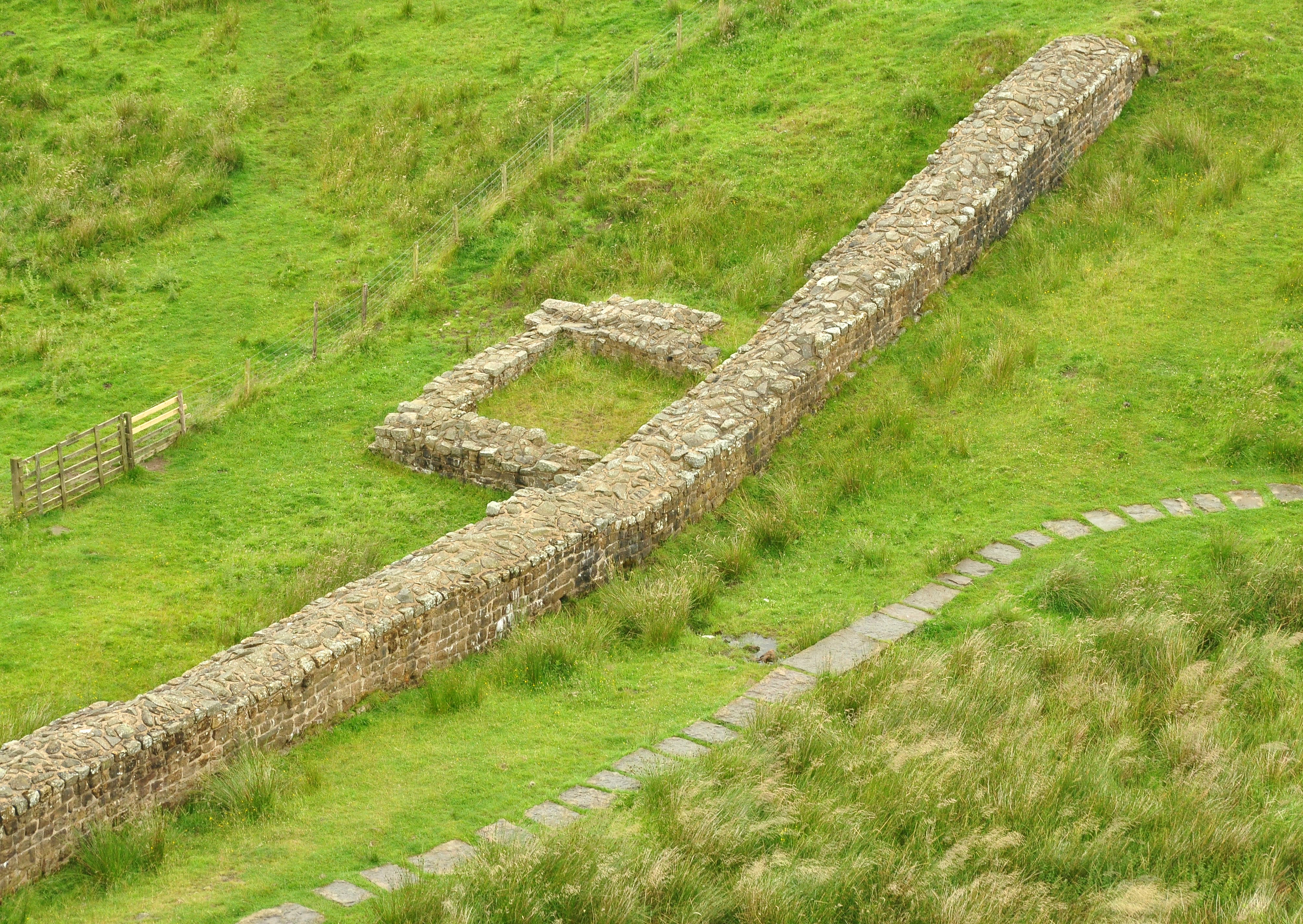|
John Clayton (town Clerk)
John Clayton (10 June 1792 – 14 July 1890) was an antiquarian and town clerk of Newcastle upon Tyne, England, during the nineteenth century. He worked with the builder Richard Grainger and architect John Dobson (architect), John Dobson to redevelop the centre of the city in a neoclassical architecture, neoclassical style (Grainger Town), and Clayton Street in Newcastle is named after him. He did much to preserve the remains of Hadrian's Wall. Early life and career He was the son of Nathaniel Clayton, Town Clerk of Newcastle upon Tyne from 1785 to 1822, and his wife Dorothy Atkinson, daughter of George and Bridget Atkinson of Temple Sowerby. He went to Kirkoswald, Cumbria, Kirkoswald School in Westmorland, and received a classical education at Uppingham School in Rutland. He began work in the firm of solicitors that had been established by his father Nathaniel in the Bigg Market in Newcastle in 1778, and which became Clayton & Dunn, and qualified as an attorney in 1815. John be ... [...More Info...] [...Related Items...] OR: [Wikipedia] [Google] [Baidu] |
John Clayton (1792-1890)
John Clayton may refer to: Arts and entertainment Writing *John Clayton (architect) (died 1861), English architect and writer *John Clayton (sportswriter) (1954–2022), American sportswriter and reporter *John Bell Clayton and Martha Clayton, John Bell Clayton (c. 1907–1955), American writer *John J. Clayton, American fiction writer, teacher, and editor Other media *John Clayton Adams (1840–1906), English landscape artist *John Clayton (Australian actor) (1940–2003), Australian actor *John Clayton (bassist) (born 1952), American jazz bassist *John Clayton (British actor) (1845–1888), British actor *John Clayton (painter) (1728–1800), English artist *John Clayton, Lord Greystoke, birthname of the fictional character Tarzan Politics *John Clayton (Roundhead) (1620–?), English politician *John Clayton (d. 1737) (c. 1666–1737), British lawyer who became burgess and List of Attorneys General of Virginia, Attorney General of colonial Virginia 1714–1737 *John Clayton (to ... [...More Info...] [...Related Items...] OR: [Wikipedia] [Google] [Baidu] |
World Heritage Site
World Heritage Sites are landmarks and areas with legal protection under an treaty, international treaty administered by UNESCO for having cultural, historical, or scientific significance. The sites are judged to contain "cultural and natural heritage around the world considered to be of outstanding value to humanity". To be selected, a World Heritage Site is nominated by its host country and determined by the UNESCO's World Heritage Committee to be a unique landmark which is geographically and historically identifiable, having a special cultural or physical significance, and to be under a sufficient system of legal protection. World Heritage Sites might be ancient ruins or historical structures, buildings, cities, deserts, forests, islands, lakes, monuments, mountains or wilderness areas, and others. A World Heritage Site may signify a remarkable accomplishment of humankind and serve as evidence of humanity's intellectual history on the planet, or it might be a place of grea ... [...More Info...] [...Related Items...] OR: [Wikipedia] [Google] [Baidu] |
Local Government Officers In England
Local may refer to: Geography and transportation * Local (train), a train serving local traffic demand * Local, Missouri, a community in the United States Arts, entertainment, and media * ''Local'' (comics), a limited series comic book by Brian Wood and Ryan Kelly * ''Local'' (novel), a 2001 novel by Jaideep Varma * ''The Local'' (film), a 2008 action-drama film * ''The Local'', English-language news websites in several European countries Computing * .local, a network address component Mathematics * Local property, a property which occurs on ''sufficiently small'' or ''arbitrarily small'' neighborhoods of points * Local ring, type of ring in commutative algebra Other uses * Pub, a drinking establishment, known as a "local" to its regulars See also * * * Local group (other) * Locale (other) * Localism (other) * Locality (other) * Localization (other) * Locus (other) * Lokal (other) Lokal may refer to: ... [...More Info...] [...Related Items...] OR: [Wikipedia] [Google] [Baidu] |
People From Newcastle Upon Tyne
The term "the people" refers to the public or common mass of people of a polity. As such it is a concept of human rights law, international law as well as constitutional law, particularly used for claims of popular sovereignty. In contrast, a people is any plurality of persons considered as a whole. Used in politics and law, the term "a people" refers to the collective or community of an ethnic group or nation. Concepts Legal Chapter One, Article One of the Charter of the United Nations states that "peoples" have the right to self-determination. Though the mere status as peoples and the right to self-determination, as for example in the case of Indigenous peoples (''peoples'', as in all groups of indigenous people, not merely all indigenous persons as in ''indigenous people''), does not automatically provide for independent sovereignty and therefore secession. Indeed, judge Ivor Jennings identified the inherent problems in the right of "peoples" to self-determination, as i ... [...More Info...] [...Related Items...] OR: [Wikipedia] [Google] [Baidu] |
Housesteads Roman Fort
Housesteads Roman Fort was an auxiliary fort on Hadrian's Wall, at Housesteads, Northumberland, England. It is dramatically positioned on the end of the -long crag of the Whin Sill over which the Wall runs, overlooking sparsely populated hills. It was called the "grandest station" on the Wall and is one of the best-preserved and extensively displayed forts. It was occupied for almost 300 years. It was located west from Carrawburgh fort, east of Great Chesters fort and about north east of the existing fort at Vindolanda on the Stanegate road. The site is now owned by the National Trust and is currently in the care of English Heritage. Finds from the fort can be seen in the site museum, in the museum at Chesters, and in the Great North Museum: Hancock in Newcastle upon Tyne. Name The name of the fort has been given as Vercovicium, Borcovicus, Borcovicium, and Velurtion. An inscription found at Housesteads with the letters VER, is believed to be short for Ver(covicianor ... [...More Info...] [...Related Items...] OR: [Wikipedia] [Google] [Baidu] |
English Heritage
English Heritage (officially the English Heritage Trust) is a charity that manages over 400 historic monuments, buildings and places. These include prehistoric sites, a battlefield, medieval castles, Roman forts, historic industrial sites, Listed building, listed ruins, and architecturally notable English country houses. The charity states that it uses these properties to "bring the story of England to life for over 10 million people each year". Within its portfolio are Stonehenge, Dover Castle, Tintagel Castle, and the "best-preserved" parts of Hadrian's Wall. English Heritage also manages the London blue plaque scheme, which links influential historical figures to particular buildings. When originally formed in 1983, English Heritage was the operating name of an executive non-departmental public body of the Her Majesty's Government, British Government, officially titled the Historic Buildings and Monuments Commission for England, that ran the national system of heritage prot ... [...More Info...] [...Related Items...] OR: [Wikipedia] [Google] [Baidu] |
Trust Instrument
In trust law, a trust instrument (also sometimes called a deed of trust, where executed by way of deed) is an instrument in writing executed by a settlor used to constitute a trust. Trust instruments are generally only used in relation to an ''inter vivos'' trust; testamentary trusts are usually created under a will. Formalities Although in most legal systems there are certain formalities associated with settling a trust, most legal systems impose few, if any, structures on the trust instrument itself. Historically, the concept of a trust is the intervention of the courts of equity to prevent a legal owner treating the property as beneficially his own; provided that state of affairs exists, a trust arises notwithstanding any lack of formality in relation to the form of the trust instrument. However, notwithstanding the flexible approach taken by the law, characteristically the legal profession has taken an extremely formalised approach to trust instruments. Not only are the ... [...More Info...] [...Related Items...] OR: [Wikipedia] [Google] [Baidu] |
Carvoran
Magnis or Magna was a Roman Empire, Roman castra, fort near Hadrian's Wall in northern Roman Britain, Britain. Its ruins are now known as and are located near Carvoran, Northumberland, in northern England. It was built on the Stanegate frontier and Roman road, linking Coria (Corbridge) in the east to Luguvalium (Carlisle, Cumbria, Carlisle) in the west, before the building of Hadrian's Wall. The fort is now the site of the Roman Army Museum. Name The fort at Carvoran is generally identified with the 'Magnis' which appears both in the ''Ravenna Cosmography'' and the ''Notitia Dignitatum''. Further evidence for the name comes from a fragmentary inscription (Roman Inscriptions of Britain, RIB 1825) apparently seen by the antiquary William Hutchinson (topographer), William Hutchinson in 1766 but which is now lost, which referred to "numerus Magnee(n)s(ium)" ("of the unit of Magn[...] ...."). The name could be a Latin Nominative case, nominative form ''Magni'', or ''Magna'', an ... [...More Info...] [...Related Items...] OR: [Wikipedia] [Google] [Baidu] |
Milecastle 37
Milecastle 37 is one of the milecastles on Hadrian's Wall. It is immediately west of the Housesteads Roman Fort (). Description The remains have been partly reconstructed and consolidated; it is now in the care of English Heritage. The wall has a maximum height of 2.2 metres internally.MILECASTLE 37 Pastscape, retrieved 26 November 2013 The milecastle has a short axis, with a Type I gateway. The milecastle contains the remains of a small barrack block in the east half which survives to 1.0 metres high. Excavations The first excavations of Milecastle 37 were in 1 ...[...More Info...] [...Related Items...] OR: [Wikipedia] [Google] [Baidu] |
Milecastle 39
Milecastle 39 (Castle Nick) is a milecastle on Hadrian's Wall (). Description Milecastle 39 is located northeast of Once Brewed. The excavated stonework has been consolidated, and the walls are up to 1.75 metres high.MILECASTLE 39 Pastscape, retrieved 3 December 2013 It measures 19 metres by 15.5 metres. Excavations The site was cleared in 1854, and was excavated in 1908–11. It was re-excavated between 1982 and 1987. It was found to have a Milecastle#Axes, long axis, with a Milecastle#Gateways, Type II gateway. In the south-east corner was a stone oven and the south-west corner a rectangular building with a sunken floor associated with Roman finds. The milecastle appears to have been occupied until the late 4th century. In the 18th c ...[...More Info...] [...Related Items...] OR: [Wikipedia] [Google] [Baidu] |
Milecastle 42
Milecastle 42 (Cawfields) is a milecastle on Hadrian's Wall (). Description Milecastle 42 is on a steep south-facing slope, 10 metres south of Cawfield Crags, and looks over Hole Gap to the west. It is on a well-preserved section of Hadrian's Wall. It measures 17.8 metres east–west by 14.4 metres north–south internally, with walls 2.8 metres thick and 1.4 metres high. Excavations It was excavated in 1847–48 and again in 1936. The 1847–48 excavation uncovered part of a dedication slab indicating that the milecastle had been built by the Legio II Augusta. The 1936 excavations showed that the milecastle had a short axis, with a Type I gateway. Associated turrets Each milecastle on Hadrian's Wall had two associated turret structures. These turrets were positioned approximately one-third and two-thirds of a Roman mile to the west of the Milecastle, and would probably have been manned by part of the milecastle's garrison. The turrets associated with Milecastle 42 are known ... [...More Info...] [...Related Items...] OR: [Wikipedia] [Google] [Baidu] |



